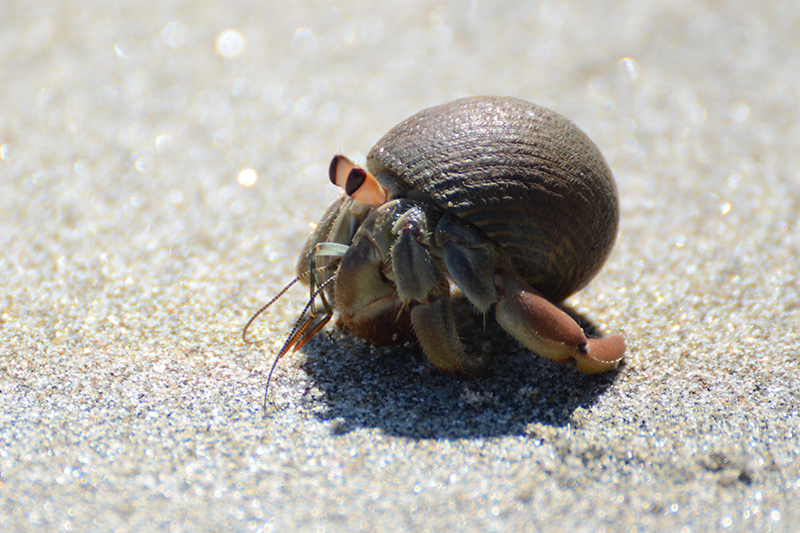Taking care of hermit crab such as providing it’s needs such as food and shelter isn’t enough. As an owner you should also know the signs if your hermit crab is healthy. And its not just enough that you the signs but you should also know how to keep them healthy as well. So in this article I’ll be discussing the signs and ways to keep them healthy prolonging their lifespan and also discuss the common health issues that hermit crabs face.
Signs of a healthy hermit crab include:
- Active and responsive behavior
- A moist, plump body
- Clear, bright eyes
- A clean, well-defined shell
- Regularly changing shells
- A healthy appetite
- A healthy and active environment
- Good hygiene and water quality
- No signs of infection or disease such as abnormal odors, discoloration, or lethargy.
How do I keep my hermit crab healthy?
To keep your hermit crab healthy, you should:
- Provide a suitable habitat: Hermit crabs need a cage with both land and water areas, with a temperature between 75-80°F and a humidity level of 70-80%.
- Offer a varied diet: Feed your hermit crab a balanced diet of commercial hermit crab food, fresh fruits, vegetables, and protein sources like cooked chicken or shrimp.
- Provide clean water: Make sure to change the water in the cage regularly and keep it clean.
- Offer a place to hide and climb: Provide hiding places and climbing structures for your hermit crab to explore and feel secure.
- Keep the cage clean: Clean the cage regularly and remove any uneaten food or feces to prevent bacteria growth and unpleasant smells.
- Provide adequate lighting: Hermit crabs need UVB lighting to stay healthy, therefore it is important to provide a UVB light source in their enclosure.
- Handle with care: Hermit crabs are delicate creatures, handle them gently and avoid dropping or injuring them.
- Provide adequate temperature and humidity: Make sure to maintain the right temperature and humidity levels in the enclosure. This can be achieved by providing a heating pad, a humidity gauge and a thermometer.
- Provide a shell change: Make sure to provide a variety of shells for your hermit crab to change into as they grow.
- Get a veterinarian checkup: Regular check-ups by a veterinarian who has experience with hermit crabs can help ensure your pet is healthy and happy.
Common hermit crab health issues
The common health issues that can affect hermit crabs include:
- Dehydration: This can occur if the humidity level in the cage is too low. Symptoms include a wrinkled or shrunken appearance and lethargy.
- Shell rot: This can occur if the shell is not cleaned or if the humidity level is too high. Symptoms include discoloration, soft or slimy spots on the shell, and a foul odor.
- Mites or other parasites: These can cause itching, scratching, and discoloration of the exoskeleton.
- Bacterial or fungal infections: These can occur if the cage is not cleaned properly, if the water is not changed regularly, or if the humidity level is too high. Symptoms include abnormal odors, discoloration, and lethargy.
- Metabolic bone disease: This can occur if the hermit crab is not getting enough calcium in its diet or if it is not exposed to UVB lighting. Symptoms include a soft shell, lethargy, and a loss of appetite.
- Respiratory problems: This can occur if the temperature is too low or if the cage is overcrowded. Symptoms include wheezing, rapid breathing, and lethargy.
- Stress: This can occur if the hermit crab is kept in an environment that is not suitable for it or if it is handled too much. Symptoms include lethargy, lack of appetite, and a lack of activity.
It is important to take your hermit crab to a veterinarian that has experience with hermit crabs if you notice any signs of illness.
